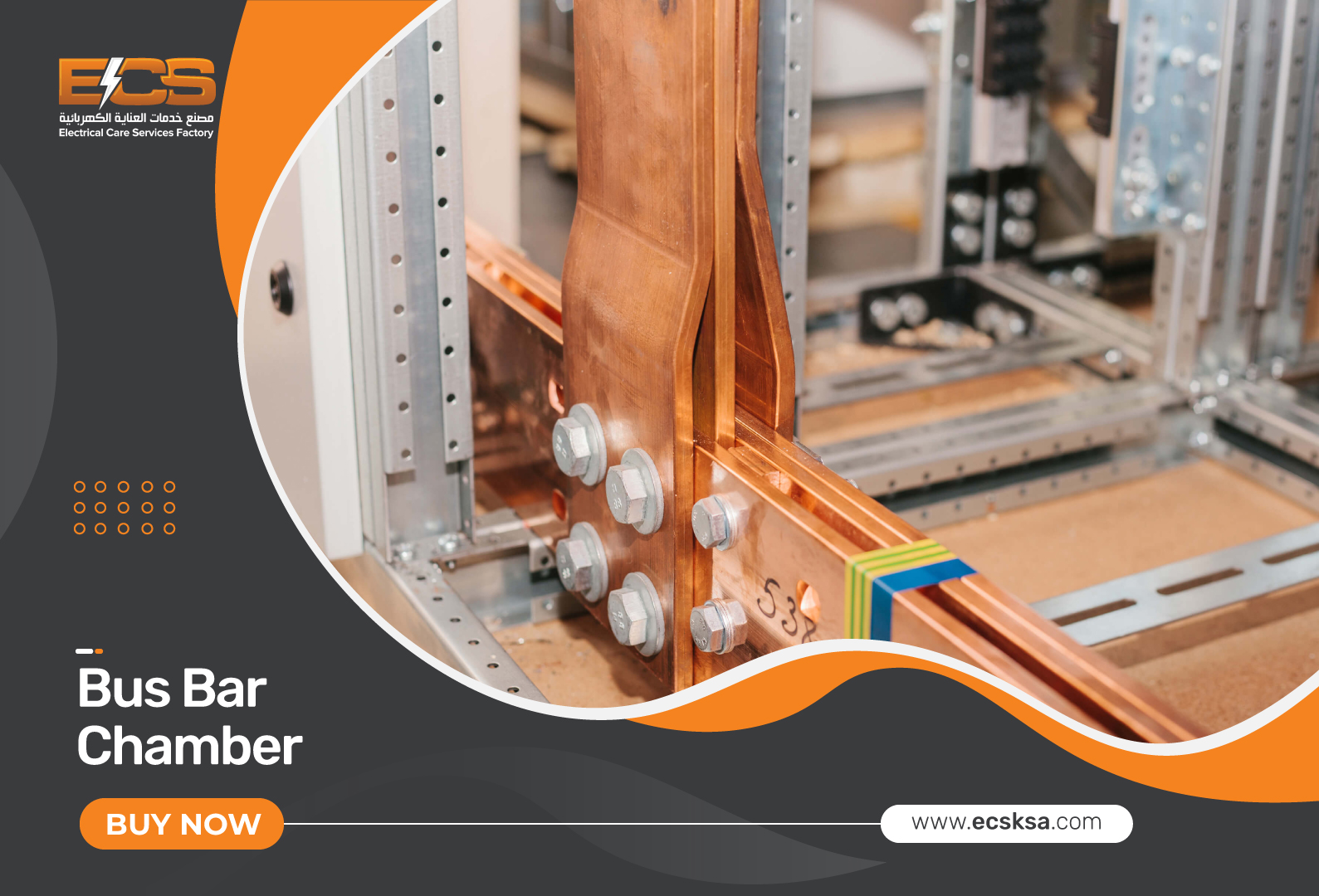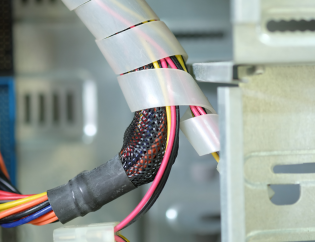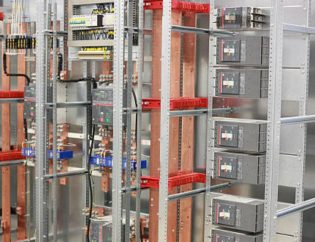In this article, you’ll learn:
- What exactly are busbar panels?
- Why are busbar panels needed?
- What are the benefits of busbar panels?
- What are the core features of busbar panels?
Keep reading further to know everything.
What are Busbar panels, and Why are They Needed?
 Simple metallic strips or bars that are kept inside switchgear, panel boards, or busway enclosures are known as bus-bar panels. These panels are mostly used to distribute high-current electricity and to make sure the electrical network is set up simply.
Simple metallic strips or bars that are kept inside switchgear, panel boards, or busway enclosures are known as bus-bar panels. These panels are mostly used to distribute high-current electricity and to make sure the electrical network is set up simply.
Bus bars significantly affect how an organization’s electrical system functions on a daily basis, particularly in the area of load distribution. Bus bars can be made of a variety of materials, including copper and aluminum, but it’s important to note that copper is more cost-effective and that using copper coating makes more sense than using any other material due to a chemical property unique to copper metal. As a result, copper-coated bus bars are more common than those made of other materials.
Bus bars will need to be obtained based on organizational electric power requirements; therefore, that will rely on the necessities. The number of amperes of electric current load that it can withstand before failing will depend on its size, shape, and coating material.
You could question why bus bars are necessary when a wiring harness would work just as well. First off, bus bars are far more dependable and efficient than conventional wiring harnesses. Additionally, because bus bars are so small, they can help you save a lot of valuable room. Consider purchasing a bus bar as an investment in an asset because it will last a lot longer than a conventional wire harness and ultimately save your organization time and money since a corporation is almost always about cost-saving.
Bus bars offer a higher standard of electrical efficiency for those few great companies that think about not only their future but also their home country; for them, this prevents the wastage of priceless electrical energy despite the fact that awareness of the need to conserve energy is fairly low in KSA.
Bus bars are highly adaptable when it comes to changing the source of electricity, which is a futuristic point to make here. In the near future, a company might elect to install a solar panel in order to harness the free solar energy to suit its needs. The thing is, solar energy isn’t like regular electricity. Because the bus-bar system is very adaptable and can be adapted to function with a number of renewable energy sources, companies may future-proof themselves by installing it.
Regarding material selection, copper is, without a doubt, the most cost-effective material used to coat bus bars. However, you might be surprised to learn that copper is the only material with a chemical structure that allows electrons to move more freely within it than in any other material, making copper a superior conductor of electricity. It’s also important to note that copper is a robust metal that can endure high operating temperatures while retaining its structural integrity. Great, isn’t it? It is. Due to its longer lifespan than conventional wiring harnesses, bus bars are a must for businesses that are dedicated to expansion.
Bus bars are the only thing you need if you work for a company that does most of its work outside, like an electric substation. Bus-bar Panels give mechanical design systems more options than any other. Because of their high degree of adaptability as a product, they are also utilized in various commercial ventures. There is no need for alternatives because they are so sturdy, strong, and dependable.
Benefits of Busbar Panels
- It boosted the intended security.
- Ranges from 32A to 200A and has good short-circuit strength and minimal fire load.
- Fulfill the need for a little space
- Assure efficient power delivery with the fewest losses.
- Comes with a metal enclosure to prevent unintended touch.
- Fix a number of lingering cable-related problems.
- Small size, adaptable for use in various applications
- Cables are less resistant than bus bar distribution Panels.
- The minimum distance between conductors to prevent resistance induction
- Bus Bar Chamber provided guarantees little voltage loss.
- Copper components with silver coating are used in CRCA sheet metal boxes.
Features of Busbar Panels Available in the Market
Bus Bar Panels
- Produced in four nominal lengths and with amperage ratings of 100, 200, 400, 630, and 800
- All four sizes are available in 100, 200, and 400 Amp units, but the three longest sizes are the only ones with 630 and 800 Amp ratings.
- The height and depth measurements are the same for every unit in the range.
- All units can be extended using extension sets by linking to a second busbar chamber with detachable end plates.
- For mounting switch gear, full mounting kits with templates are available.
- By removing the neighboring end plates and using the proper busbar chamber extension set, each unit can be connected to any other chamber in the same rating range. Four copper links are included in this set, along with all the required clamps, washers, and fasteners.
Pedestals and Back Plate Sets
- For busbar Panels with nominal lengths of 1800, 1350, and 900 mm in all ratings, pedestal and back-plate sets are provided.
- These kits make it possible to quickly and affordably assemble full industrial switchboards, producing a finished product that looks good.
- Each set includes a pedestal backplate that has already been drilled, two pedestal side plates and feet, and all necessary fasteners and spacers for floor-mounting bolts.
- Components have a light gray paint finish on rust-protected sheet steel.
Connection sets
- For switchgear up to 200A, cable clamps are available in all ratings.
- Solid copper connection sets are recommended as being both affordable and practical for connecting units of 160A and above. These 4-pole sets of pre-formed, insulated links come with all the necessary clamps and fasteners. Connection sets for 160-800A units must be used with the correct switchgear mounting set (41, 51, or 61 BBMS).
Conclusion
Bus bar panels are essential for industrial electrical distribution systems’ safety, security, and productivity. If you employ them, you’ll save costs, time, and resources. Upgrade your electrical system with a high-quality busbar panel from ECSKSA selection.
Check out our product page to choose the best bus bar panels for your facility.
Frequently Asked Questions
Q1: What is a busbar used for?
Metal bars called busbars are used to transport enormous currents.
Q2: Which material is used for the busbar?
Aluminum and copper are the materials used to make bus bars.
Q3: Why is a busbar used in a panel?
Electricity is distributed more easily and adaptably via busbars, sometimes referred to as busbar trunking systems, than by various other, more durable installation and distribution methods. They are typically metallic strips made of copper, brass, or aluminum that carry electricity and can also be spelled as a bus bar or bus bar.
Do you have a question in your mind? If so, make sure to fill out the form below!



